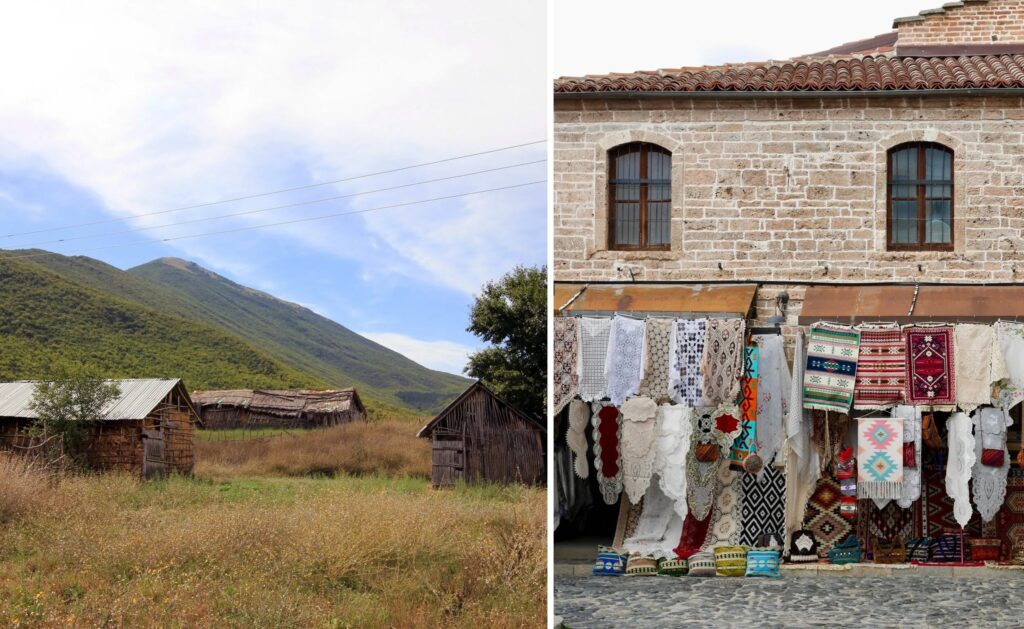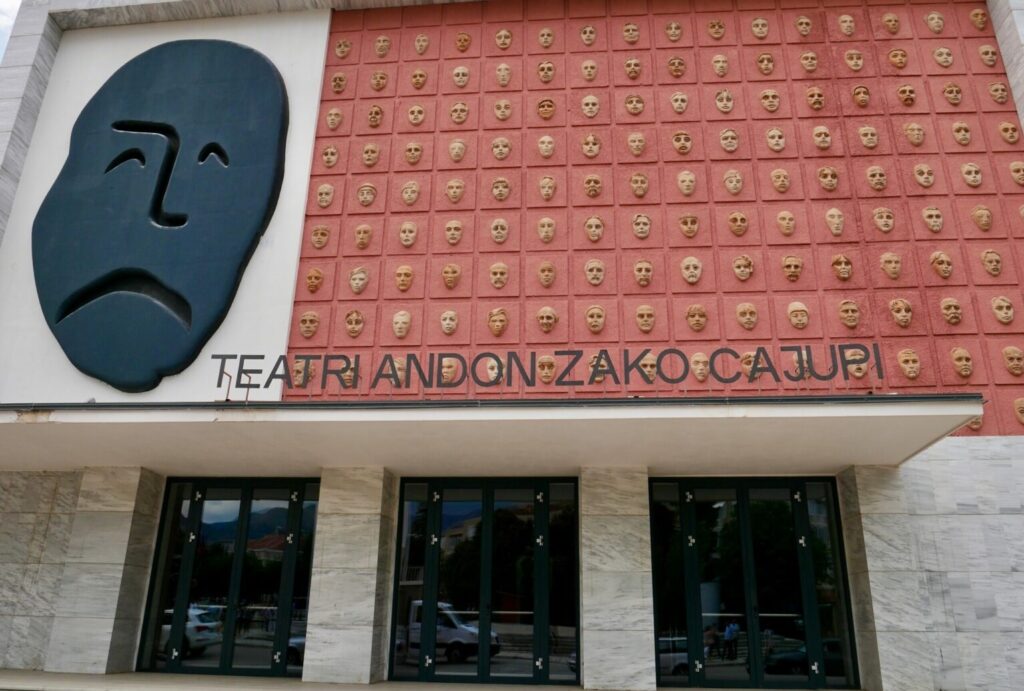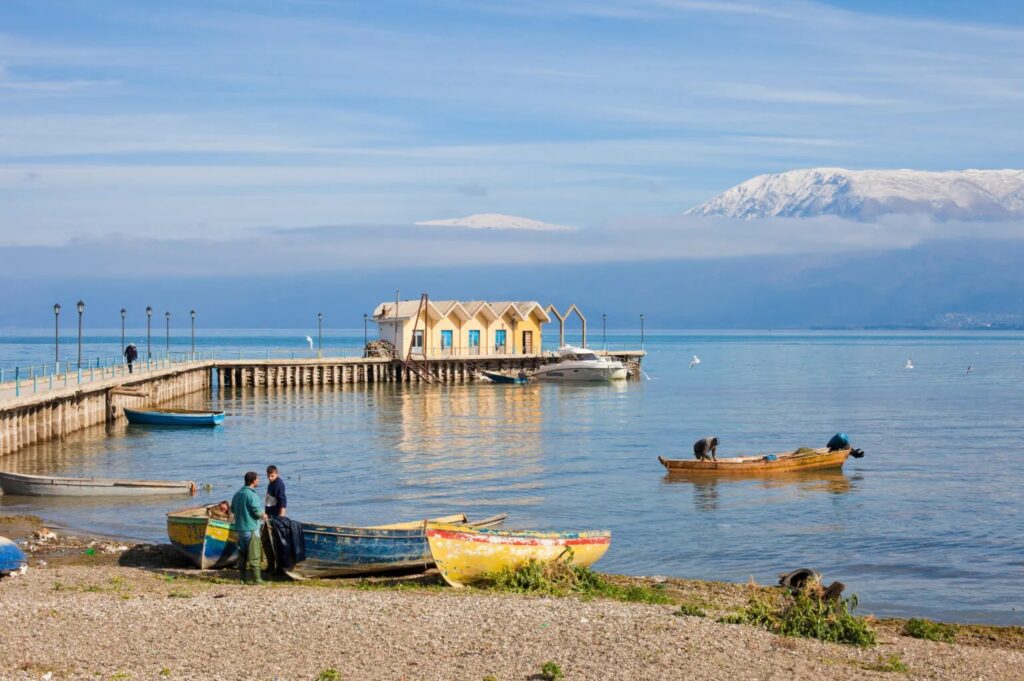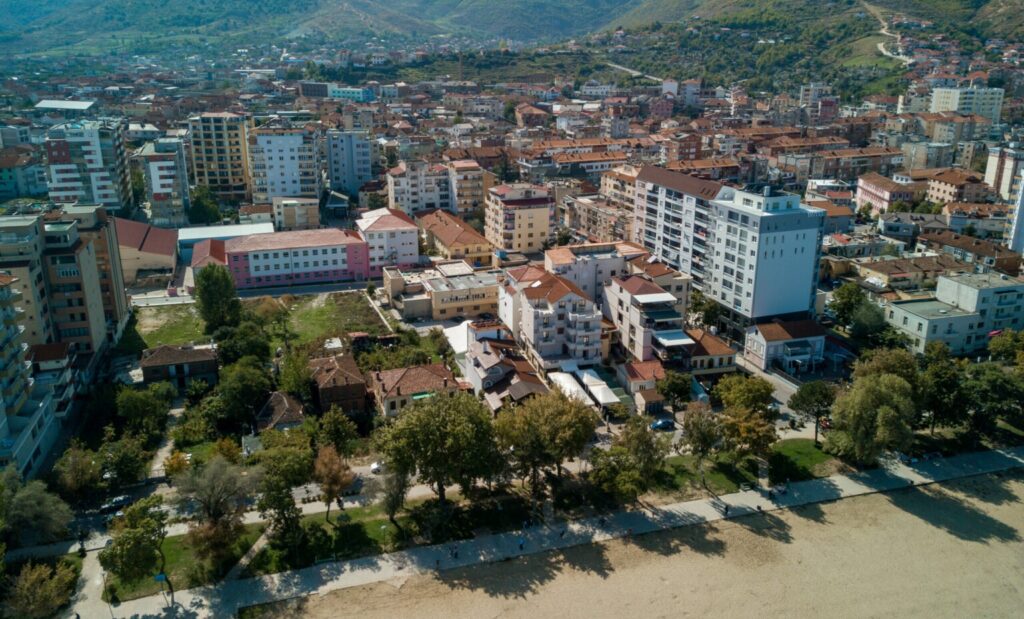Two cities with great history and culture a breath away from the Greek border.
When arriving at the customs office of Krystallopigi on the border of Greece and Albania, a few things caught my eye. Half-forgotten border posts, security personnel, several customs officers and queues of cars make up a scene of busyness in a calm mountain landscape.
Leaving relatively quickly behind the image so characteristic of the Greek-Albanian border, we take the mountain road that leads to Korytsa (Κορυτσά, Albanian: Korçë).
On the high plateau northeast of Grammos, mountain peaks extend as far as the eye can see, and peaceful green fields fill the horizon. At the same time, the rural image of the Albanian countryside creates photo opportunities that would be the envy of even the best photographers.

The Balkan scenery consists of small villages perched on adjacent hills, gas stations that were closed in the previous century, and tall advertising columns.
With these images in mind, we arrive in Korytsa after about 45 minutes of driving on an asphalt road with absolutely basic signage and minimal to non-existent lighting.
Once known as the small “Paris of the Balkans,” a designation claimed by many cities in the Balkan hinterland, Korytsa has undoubtedly linked its name to Greek history like few cities outside of Greece.

The seat of famous Greek schools and the interwar Bank of Athens, Korytsa was, until about 1920, a purely Greek city associated with 20th-century personalities, from Georgios Seferis to Enver Hoxha.
An essential link in the trade route that for centuries connected the Macedonian hinterland with Thessaloniki and Constantinople, Korytsa has suffered much tragedy, mainly due to its location. It has also suffered in all the World Wars, welcoming almost all the European armies that, for one reason or another, stepped foot in the area.
The small “Paris of the Balkans” quickly became a half-forgotten border town that lost a large part of its population along with its French glamour.

Today, the once-trading town of the Balkans is a small, dynamic city that, despite its isolation on Albania’s southeastern border, has a population of around 77,000 people and stands out for the great Resurrection of Christ Cathedral right in its centre.
The restored old town, with its small alleys and colourful shops in old Balkan two-story house-style, stands out for its vintage aesthetic.
In contrast, the restored socialist theatre Andon Zako Çajupi proves why this small town is still considered the cultural heart of Albania.

Leaving Korytsa behind, we head further north towards Pogradec and the Albanian shores of Lake Ohrid. The landscape gradually changes for some inexplicable reason (probably because of the Mediterranean microclimate of Ohrid).

While in the heart of the Balkans, we think we are arriving at a seaside village somewhere in the Aegean. Green landscapes, street fruit vendors and countless bends lead to the lakeside town of Pogradec.
Home to Albania’s best-known writers, Pogradec has inherited a heavy artistic name, expressed in the city’s Hollywood-inspired central pedestrian street with writers’ names.

At the same time, the small town is famous for the dynamic cultural festivals it hosts every summer. Here, you will also find the large Driloni Park, worth a leisurely walk on the shore of Ohrid, with the mountain view reflected in the waters of the ancient lake.
 Yianni Koutroudi is a columnist for Travel. Translated by Paul Antonopoulos.
Yianni Koutroudi is a columnist for Travel. Translated by Paul Antonopoulos.
READ MORE: From Samarina to Florina – A mountainous weekend in Western Macedonia.


